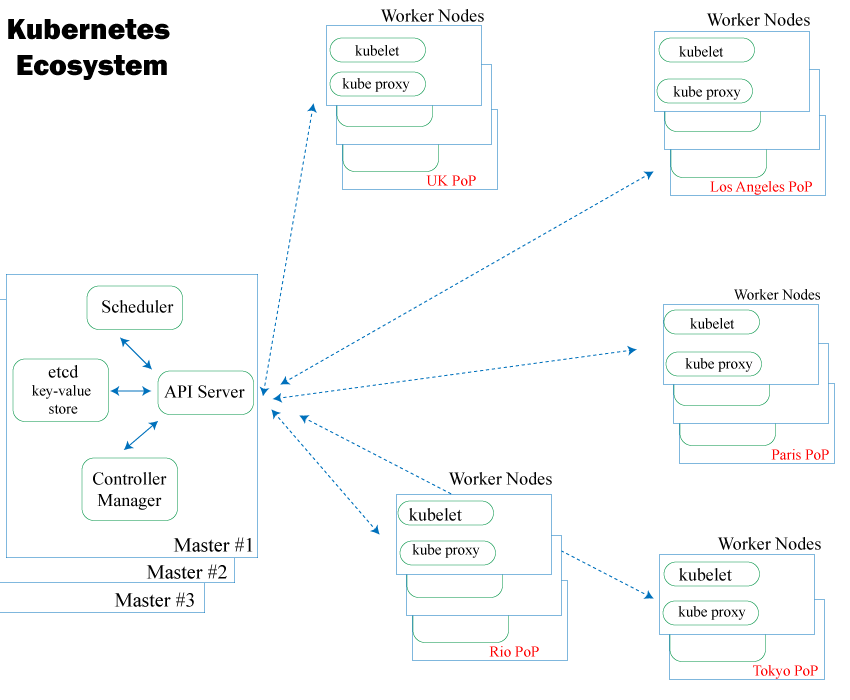Rafay Systems is making its SaaS-based Containerized App Lifecycle Management platform generally available to the public later this month. Since January 2018, the Rafay team has been working diligently to build out its platform feature set. During this time, the startup has signed up a few paying customers including a major telecom operator and several enterprise customers.
Simply stated, Rafay automates the ongoing operations and application lifecycle management of containerized apps and workloads globally, across any number of clusters, environments, and clouds – as a service.
Container Market
The application container market is growing 30.8% annually and is forecasted to double from $2.1B in 2019 to $4.3B in 2022. The CDN market will reach ~$8B in 2019, based on our estimates. Although these two industries were once mutually exclusive, market convergence is taking place and we’ll start to see some overlap in the future. In the container market, the two most important technologies are Kubernetes and Istio. Kubernetes is open source, fully featured orchestration platform that automates the deployment, scaling, and management of a container-based ecosystem. Istio is the same thing but for microservices.
Containers and microservices have changed the way apps are built, deployed, and managed. Monolithic applications where everything was built into a single app is taking a back seat to modern application development, where functionality is broken into parts and abstracted. The benefit of this approach, each part can be developed in a different programming language and framework. Also, updating one part doesn’t impact the other and each part can run on a different cloud provider if need be.
Containers and Microservices
Kubernetes is the gold standard for managing the container ecosystem. And the community continues to add more features and functionality to the platform. Hundreds of startups have popped up to create and support different areas of Kubernetes, in the areas of monitoring, networking, discovery, and so on. Although Kubernetes can run across different availability zones and multi-cloud, complexity has skyrocketed, and adoption hasn’t been able to keep up with the innovation.
Microservices takes the application development process to the nth degree of abstraction, where the network is completely abstracted from the application. Istio, known as a service mesh is an open source orchestration platform that helps manage tens of thousands of microservices if need be and provides critical functionality for monitoring the failures of services so that if a failure occurs, the system will fix it. Envoy proxy is a building block of Istio and is in charge of network communication. It uses a sidecar proxy which sits right next to each microservice and manages many different areas such as load balancing, TTL, rate limiting, service discovery, and so on. All the application needs to do is talk to localhost and Envoy takes care of the rest.
The major benefit to developers, they can focus on writing code that makes money, not writing infrastructure code into the application so that it can communicate with other parts of the system.
Multi-Cloud Complexity
There will be cases when companies need to manage dozens of clusters and thousands of containers spread across different providers. In such circumstances, something more than just Kubernetes is needed. Although Kubernetes and Istio automate many of the tasks such as deployment, service discovery, load balancing and so on on a per-cluster basis, there is still a lot of work that needs to be done to figure out things like traffic steering, container scaling, log aggregation, secrets management, configuration lifecycle, application upgrades, and so on. Plus, companies need to make all of this work across multiple clusters – because no one has just one cluster – that possibly live across multiple cloud regions.
These problems haven’t gone unnoticed and the market has responded. A few companies have stepped up to the plate and created an offering to deal with this type of complexity. There is Google Anthos, Pivotal PKS, and Red Hat OpenShift Online. However, these three services require the customer to do the heavy lifting and manage the entire operation. Fundamentally these platforms expose the technology underbelly to the dev and DevOps teams and require that companies build internal expertise in Kubernetes and the surrounding plethora of technologies. All of these platforms essentially expose a self-service, do-it-yourself, model. Red Hat has also introduced Openshift Dedicated, where they manage the Kubernetes ecosystem, but it’s kind of limited in that you still have to figure out where it should run it, what size compute instance should be used, how to write YAML-based config to drive the application lifecycle and so on.
This is where Rafay comes in. The managed the entire application stack and underlying infrastructure. Their turnkey SaaS platform abstracts away the complexities of Kubernetes to automate ongoing operations for deploying, scaling, and managing containerized applications. They provide an easy-to-use system that lets companies describe business intent that gets converted to specific configuration around things like cluster-specific configuration, scaling models, configuration and key distribution mechanisms, redundancy parameters, and more.
Rafay Business Model
Rafay provides the complete intent-based management of application containers on behalf of customers. All customers have to do is focus on writing code, not the application runtime, or infrastructure management. Rafay will deploy, scale, update and manage any complex ecosystem using containers or microservices, as a service. They’ve developed the tools, instrumentation, and best practices to manage these complex setups in a simplified and automated manner. The scaling and distribution part is like a CDN, in that the service can deal with unexpected traffic peaks anywhere in the world, dynamically. Thus, they are the programmable edge, CDN for microservices and containers, Container Delivery Network, Lifecycle Management Delivered-as-Service, and more.


